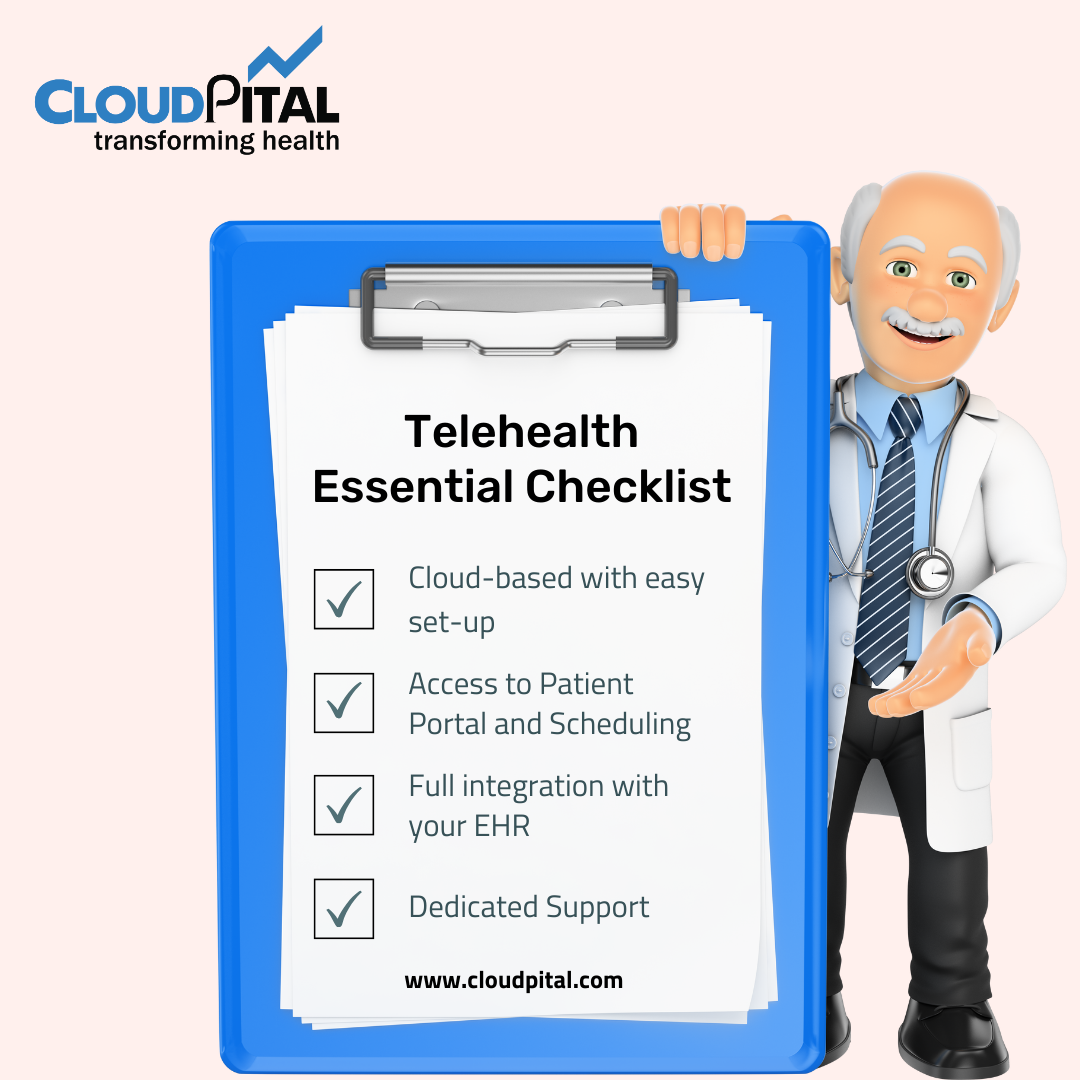Cloudpital # 1 one of the top PMS landscape are at the heart of operations: the Practice Management System and the EMR system. A PMS streamlines the management of most administrative tasks, including appointment scheduling, billing, and insurance management; on the other hand, an EMR system is typically designed for the clinical functionality of a patient’s health record, medical history, diagnoses, and treatment plans. Integrate these systems so that healthcare providers can get a holistic view of the administrative and clinical perspectives related to the patients’ care so they can ensure seamless care delivery.
Click to Start Whatsapp Chatbot with Sales
Mobile: +966547315697
Email: sales@bilytica.com
Cloudpital # 1 PMS

Understanding the Core Functions of PMS and EMR Systems
The very first step before going deep into integration would be an understanding of the distinctive roles that PMS and EMR systems play in a healthcare setting:
Practice Management System (PMS): A PMS manages administrative functions of a practice, which include managing patient scheduling, billing, claims management, insurance verification. It gives practice streamlined front-office work, thus improving effectiveness in operational matters and financial management of healthcare practices.
Electronic Medical Record (EMR): And then there’s an EMR, which is a computerized record of clinical data. It follows the patient’s medical history, diagnosis, prescription, lab results, and other health-related information. This is commonly utilized by health care providers in the monitoring of the treatment progress of the patient and in making decisions for clinical issues.
These systems serve different yet complementary purposes, namely PMS managing the administrative workflows while EMR manages the clinical information. Standing alone, the two systems create a disconnection with resultant duplicate entry of data, higher chances of delays in the administrative procedures, and possibilities of errors in the records. The integration of PMS and EMR systems addresses these issues by creating a seamless flow of information across both clinical and administrative functions.
Technical Approaches to PMS and EMR Integration
Integrations between PMS and EMR systems require robust technology frameworks for seamless communication between them. Here are the key methods used for integration:
APIs: APIs are mostly used in application areas integrating different systems. Usually, real-time information exchange between PMS and EMR systems makes use of APIs. These are simply bridges that connect different software systems to share information so that both are updated without being influenced manually. The API integration ensures that patient information input on the PMS immediately feeds into the EMR and vice versa.
Interface Engines: These engines can act as an intermediary which enables the flow of data from the PMS to the EMR, as well as vice versa. They provide a standardization of data formats and can carry out transformation operations on data, thus allowing both systems to understand each other relatively easier. This is particularly useful in practices that have different vendors for the PMS as well as EMR and they want to make up for some of the compatibility issues between the two.
HL7 Standards: Health Level Seven International is an international set of standards for electronic health data exchange. Most PMS and EMR systems support HL7 protocols to assure interoperability, that is the data formatting and structure remain the same while integrating. HL7 Standards are a must for multi-vendor environments and complex IT infrastructures in a healthcare facility.
Cloud-Based Integration Platforms Cloud-based integration platforms are also increasingly used for PMS and EMR integration. Cloud-based integration platforms enable healthcare practices to connect their systems without investments in on-site infrastructure. Hosting data and integration tools in the cloud offers flexibility and scalability with guarantees of safe and reliable transfer of data.
Determination of which integration method to employ depends on some factors, such as the healthcare facility available budget, already set technology and vendor support. Real-time updates usually are preferred using API integration, but HL7 standards are a must for the systems that do not follow the industry’s regulations or standards.

Key Functionalities Enabled by PMS and EMR Integration
It is at the point of registration that the integration of Medical Solutions in Saudi Arabia and EMR improves several aspects of a care pathway through up-to-date follow-up care. The following illustrates how PMS and EMR functions typically work across stages:
Patient Registration: When a patient is registering for the first time, PMS will capture all of his or her necessary details to build patient contact information, insurance coverage, and other demographic details. Through integration, this detail will automatically get transferred to EMR. And this will automatically make a new clinical record or update the patient’s clinical record. So there will be no duplication of entry, and the patient data will be the same in both systems.
Scheduling and Check-In: The PMS will call the EMR system to schedule the patient upon a patient’s appointment booking, ensuring that the schedule is always available to the clinical staff. During check-in, the PMS will note the time the patient arrives, and the EMR updates the patient’s status, which allows the clinician to view a patient’s information the moment a patient is ready.
Billing and Coding: The integration of PMS with EMR allows billing and coding to go in an organized manner. Immediately after a patient’s consultation, the EMR captures the clinical notes and diagnosis along with procedure codes. These findings are submitted to the PMS for billing, from where the system creates claims based on the codes that are issued. This integration will minimize errors in billing and cut down the time cycle for reimbursement.
Clinical Documentation: Providers document clinical notes, diagnosis, and prescriptions and lab results in the EMR during treatment. These clinical data become available to the PMS, which then employs the data for appointment follow-ups, patient reminders, and other office duties. Integrated systems allow administrative staff to provide correct and accurate information to help assist the patient in knowing next steps in care without duplicating clinical data entry.
Patient Engagements: Patient Portals and Messaging:-Integrated PMS and EMR systems with patient engagement capabilities include features like patient portals and messaging. Patients can log into their portals to track their lab results, request appointments, or send providers messages. Since the systems are an integrated product, patients experience a seamless experience while working with either the clinical or administrative aspects of their care.
Benefits of Integrated PMS and EMR System
Integration of PMS and EMR systems, which provide various benefits to enhance both the operational efficiency and quality patient care with financial performance, includes improvements in respect of data accuracy and error reduction. Some of these include:
Data entry errors in respect of duplicate records or inconsistent information. The process of integration minimizes errors resulting from reduced manual data entry as consistency is achieved between systems concerning patient profile data.
Improvement in Operational Efficiency: Integrated systems enhance workflow because they automate administrative tasks such as the transfer of data between scheduling, billing, and clinical documentation. Since this frees up the staff to focus on direct patient care, it also reduces bottlenecks in the administrative side.
Faster billing, more accurate revenues: An integrated PMS and EMR provide much faster and more accurate billing. The PMS can thus pick up quick and simplified billing from automated offerings of clinical codes and treatment specifics provided by the EMR. Therefore, healthcare practices become better equipped for quicker reimbursements and better cash flow.
Improved Patient: Experience Patients enjoy a more streamlined and transparent process. In an integrated system, less time is spent repeating the same information to different staff members, check-in times are faster, billing is smoother, and patients are getting their records back much quicker. Stronger communication capabilities make them feel more included in their care.
Regulatory compliance and data security: The seamless integration of PMS and EMR ensures the healthcare providers adhere to HIPAA, GDPR, and other statutory compliances by offering secure data transfers and access controls with regular auditing. These are, therefore, essential for maintaining patient privacy and protecting the legal liabilities of practices.
Better Reporting and Analytics: The integration is what allows for rich reporting in that administrative data is now integrated with clinical data. This way, providers can have all-rounded reports, giving insights about operational performance and patient care quality. These insights are priceless and help find the gaps for improvements and even data-driven decisions on improving services.
Overcoming PMS and EMR Integration Challenges
Although the advantages of PMS and EMR integration are well-known, there are difficulties healthcare providers face in the process of integration, including:
Compatibility Issues: Compatibility issues are present not only for all PMS and EMR systems but also in the event of different vendors. Systems having open APIs and HL7 compliance can limit compatibility issues.
All the above concerns related to data security are of utmost concern since integrated systems handle huge volumes of sensitive information. Data must therefore be secured on encryption and access control while complying with healthcare regulations. Patient confidentiality is the number one goal.
Cost of integration
The cost of integrating RCM and EMR systems may be quite high, especially to smaller practices. However, many vendors now offer integration options through the cloud that tend to minimize infrastructure costs yet offer scalability.
Conclusion
One of the most impressive developments in healthcare technology is the integration of PMS and EMR. Such integration creates an interconnected approach to administrative as well as clinical data management. This enables a unified flow of data that results in increased precision of data, improved efficiency of operations, acceleration of billing, and overall enhancement of patients’ experience.
As healthcare grows more and more digital solutions are considered, so the integration of PMS and EMR systems will form a part of coordinated care, or rather, delivery of high-quality care. In that regard, an investment into the healthcare practice, not only builds efficiency and growth but would create stronger, trust-based relationships among providers and their patients, which would help providers to make care a lot more personalized, informed, and timely.
You can explore our other blogs
How does PMS integrate with EMR systems? similar software solutions prices were updated on 2025-07-02T02:03:48+00:00 in Saudi Arabia in Mecca, Medina, Riyadh, Khamis Mushait, Yanbu, Jeddah, Dammam, Unaizah, Uqair, Ha’il, Ta if, Al Bahah, Dhahran, King Abdullah Economic City, Najran, Diriyah, Qatif, Khafji, Jubail, Abqaiq, List of Cities and Towns in Saudi Arabia, Ras Tanura, Turubah, Jazan Economic City, Knowledge Economic City, Medina, Khobar, Abha, Tabuk, Saudi Arabia, similar software solutions prices were updated on 2025-07-02T02:03:48+00:00 We also provide in Saudi Arabia services solutions company in Hafar Al-Batin, Udhailiyah, Al-Awamiyah, Hofuf, Hautat Sudair, Buraidah, Tayma, Duba, ‘uyayna, Saihat, Al-Kharj, Al-ula, Jizan, Rumailah, Ar Rass, Arar, Shaybah, Al Majma’ah, Rabigh, Dhurma, Haradh, List of Saudi Cities by Gdp Per Capita, Badr, Sudair Industrial City, Baljurashi, Shaqraa, Al-Khutt, Habala, Ad Dawadimi, Dawadmi, Layla, similar software solutions prices were updated on 2025-07-02T02:03:48+00:00 Price is SAR 100 and this was updated on updated on 2025-07-02T02:03:48+00:00 similar How does PMS integrate with EMR systems? software solutions prices were updated on 2025-07-02T02:03:48+00:00 in Saudi Arabia in Haql, Afif, Al-Abwa, Farasan, Al-Jaroudiya, Thadig, Al-Thuqbah, Al Wajh, Almardmah, Al-Zilfi, Muzahmiyya, Prince Abdul Aziz Bin Mousaed Economic City, Tharmada’a, Skaka, Um Al-Sahek, Sharurah, Tanomah, Bisha, Dahaban, Al Qunfudhah, Qurayyat, Saudi Arabia, Ha’ir, as Sulayyil, Al Lith, Turaif, Al-Gway’iyyah, Samtah, Wadi Ad-Dawasir, Az Zaimah, Safwa City, Jalajil, Harmah, Mastoorah, Hotat Bani Tamim, Jabal Umm Al Ru’us, Rafha, Qaisumah, Al-Ghat, Hajrah, Al-Hareeq. Excerpt: Jeddah (also spelled Jiddah, Jidda, or Jedda; Arabic: Jidda) is a Saudi Arabian city located on the coast of the Red Sea and is the major urban center of western Saudi Arabia similar software solutions prices were updated on 2025-07-02T02:03:48+00:00 Price is SAR 100 and this was updated on updated on 2025-07-02T02:03:48+00:00
11-11-2024



